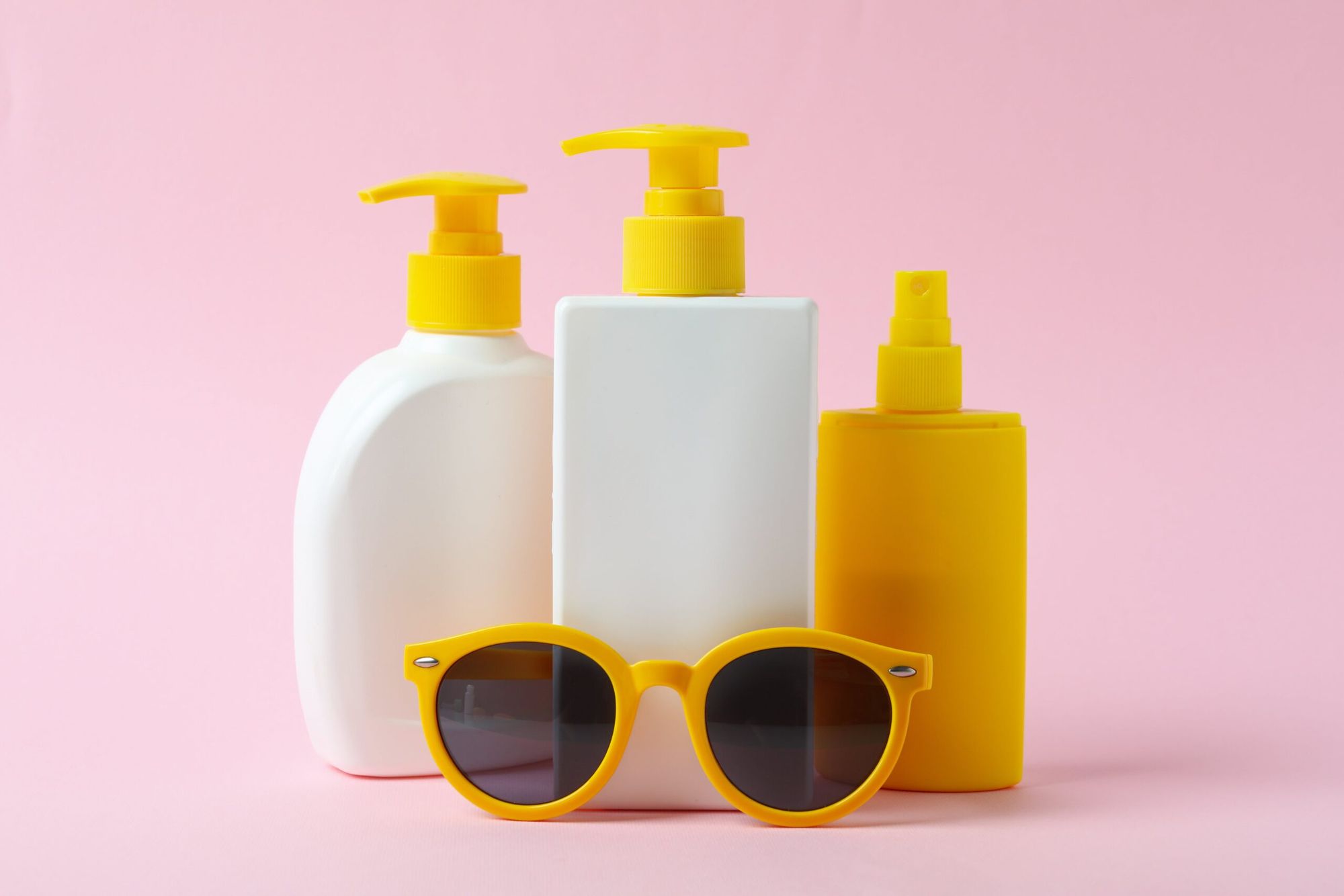
The sun is shining, and that means you want to spend as much time as possible outside enjoying the warm weather this summer. Pool days, BBQs, day trips to the beach, get-togethers on a patio – it all happens when the sun comes out. However, spending time outside in the sun should never be happening without having sunscreen on.
Generally speaking, we all should be applying sunscreen to our face and body, about 20 minutes before sun exposure. We also need to be aware of some of the sunscreen ingredients to avoid. Certain higher quality sunscreens that don’t contain harmful ingredients are better for your skin.
Sun protection is crucial because exposure to the sun’s UV rays increases the risk of skin cancer. Sun burns are also quite uncomfortable and sometimes painful. And don’t forget that sun exposure – especially without sunscreen – leads to faster skin aging.
Applying sunscreen is one of the ways you can help prevent skin cancer. This is especially important if you have a family history of skin cancer, or if your DNA test from CircleDNA reveals that due to your genetics, you have a higher risk of skin cancer. Your CircleDNA test can also reveal hundreds of other reports on your genetic risk of other diseases, as well as your genetic success traits, skin traits, and more.
What Exactly Does Sunscreen Do?
Sunscreen is a skin cream, lotion or spray that can be applied to your entire body in order to protect you from the harmful rays of the sun. Sunscreen should be applied to your skin all year long, but the sun is especially strong in the summer.
Sunscreens are typically made up of a mix of chemicals that protect your skin from the sun. Inorganic chemicals in certain sunscreens work by reflecting the sunlight away from your skin, and some organic sunscreens can absorb UV rays so that your skin doesn’t absorb them. Sunscreen can’t protect you from 100% of the UV rays, which is why in addition to sunscreen, you also need other forms of sun protection. In addition to sunscreen, you should also use hats, umbrellas, and limit your time in the sunshine instead of basking in the sun all day.
Even if you are only going outside for a short period of time, it is important that you apply sunscreen in order to keep yourself safe. Some people have separate sunscreens for their face and body, since the skin on the face is especially important to protect.
The sunscreen ingredients to avoid are most important to avoid in a face sunscreen.
Sunscreen Ingredients to Avoid
If you are curious about sunscreen ingredients to avoid, especially if you have sensitive skin, below is a list of some sunscreen ingredients to avoid:
- para-aminobenzoic acid
- Amino benzoic acid
- Glyceryl amino benzoate
- Ethyl-4-bis amino benzoate
- Amyl dimethyl PABA,
- Glyceryl PABA
- Ethyl dihydroxypropyl PABA
- Octyl dimethyl PABA,
- Octyl salicylate
- Homosalate
- Triethanolamine salicylate

How to Identify Unwanted Ingredients in Sunscreen
If you want to identify unwanted ingredients in your sunscreen so that they can be avoided, you must check the label before you buy the product. Read the ingredients so that you can check if there are too many unwanted ingredients.
You could also talk to someone at a local medical aesthetics clinic. These clinics often sell very high-quality, non-toxic, high-end sunscreens that are good for your skin. The knowledgeable staff can go over the sunscreen ingredients with you, so you know you’re buying a quality sunscreen.
The FDA website lets you check and see if the ingredients listed are regulated or approved. This will give you a clear idea of which ones have been confirmed as safe for use on your skin to give you peace of mind.
Watch out for the sunscreens that simply state they are made from natural ingredients and don’t list many ingredients on the back. All sunscreen is made using chemicals, and not all chemicals are bad. In fact, many of them can be helpful and a good number are used to protect your skin.
How to Choose a Sunscreen That’s Good for Your Skin
Now that you know about the sunscreen ingredients to avoid, we can take a closer look at the other qualities you should be looking for when choosing your next sunscreen. After all, you want the best possible sun protection that’s also good for your skin, so that you can enjoy the warm summer weather without worry.
The Ingredients to Look For
There are physical and chemical sunscreens, but an interesting fact is that both of them are made up of chemical compounds, which means physical sunscreen doesn’t consist of natural ingredients. This doesn’t mean either of them is harmful, though.
Physical sunscreen ingredients work by blocking and scattering the rays of the sun before they can penetrate your skin. The chemical ingredients absorb UV rays before they have the chance to damage your skin, and help make sure your skin doesn’t absorb those harmful rays.
Good active ingredients in sunscreen to keep an eye out for include:
- titanium dioxide
- zinc oxide
- avobenzone
- octisalate
- glycerin
Some of the other factors on the label you should take into consideration are:
- Water resistant and waterproof sunscreen (if you’ll be swimming)
- Broad-spectrum protection
- SPF 30 or higher (for extended outdoor activities)
Most people wear SPF 50 or SPF 60 for optimal protection, especially on the face.
Taking Your Skin Type into Consideration
Everyone should use sunscreen, but it is important to remember that your skin type can also play a part in how much you need to use, and the SPF level that you apply.
For example, those with red or ginger hair tend to need to apply sunscreen more regularly and use a higher SPF for protection because they are naturally more sensitive to the sun and more susceptible to sunburns.
If you have dry skin, you should choose a sunscreen with hydrating properties, and those with oily skin might want to consider one that uses chemical ingredients primarily because they tend to be drier.

Where to Find High-Quality Sunscreens
If you want to find a sunscreen that is high-quality and safe to use, it is a good idea to go to reputable sources for advice. You will find that there are plenty of dermatologists and medical aesthetic clinic staff members who are more than willing to give you recommendations.
Additionally, you can speak to aestheticians at high-end spas or those who work at skin clinics, who will all have solid recommendations for which sunscreens are not only safe but will also work best with your skin type.
Be careful with online stores, always read the reviews for the brand of sunscreen and research the ingredients used.
Examples of Good Sunscreen
There are a lot of fantastic sunscreens out there, but how are you going to sort through them all yourself? The good news is that we have a quick list of the some of the best brands so that you can find one that works perfectly for your skin:
- Dermalogica Sunscreen
- La Mer Broad Spectrum Sunscreen
- SkinMedica Sunscreen
- Rodan and Fields
- Vichy
- Ulta
- Julep
- Everyday Humans
- Bare Republic
The Bottom Line
We hope that this guide has been able to help you gain a better understanding of how sunscreen works, and the sunscreen ingredients to avoid, as well as which brands of sunscreen are higher in quality.
Beautiful, healthy skin is in. So don’t underestimate how important a high-quality sunscreen is.





